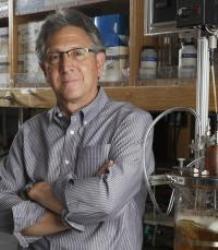Researchers from the Scripps Research Institute have discovered a complex chemical pathway that influences biofilm formation by bacteria.
 Michael Marletta, Ph.D., is president and CEO of the Scripps Research Institute.
Michael Marletta, Ph.D., is president and CEO of the Scripps Research Institute.
The finding may help to develop innovative treatments targeting biofilms, which are used for a broad range of human infections and enable bacteria to resist antibiotics.
Michael Marletta, President and CEO of the institute, stated that approximately 80% of human pathogens help to form biofilms during certain part of their life cycle. A research team led by Marletta has described the signaling pathway that starts from nitric oxide and continues to the sensor via cellular regulators, resulting in biofilm formation. Biofilms can be produced on surgical devices, such as catheters or heart valves, which lead to potentially fatal infections. In addition, the films play major roles in various conditions,ranging from cystic fibrosis to Legionnaires' disease and from gum disease to cholera.
For many years, The Marletta lab and several other research teams have been performing studiesto find out how nitric oxide controls blood vessel dilation, nerve signals in humans and others. Earlier study had shown that nitric oxideinfluences biofilm formation in bacteria. The new study helps to reveal the output, once the nitric oxide triggeris activated. Scripps Research team used Heme-Nitric Oxide/Oxygen (H-NOX) binding domain and histidine kinase, an activating enzyme. The researchers were able to find a connection between the enzyme and the bacterial H-NOX domain and they used phosphotransfer profiling technique to understand more about the process. The trials have revealed that the histidine kinase enzyme phosphorylated three proteins, known as response regulators,which function together to control formation of biofilms. One regulator is responsible for activating gene expression, the second one controls the action of an enzyme and the third regulator adjusts the degree of action of the second regulator.
Source: http://www.scripps.edu/